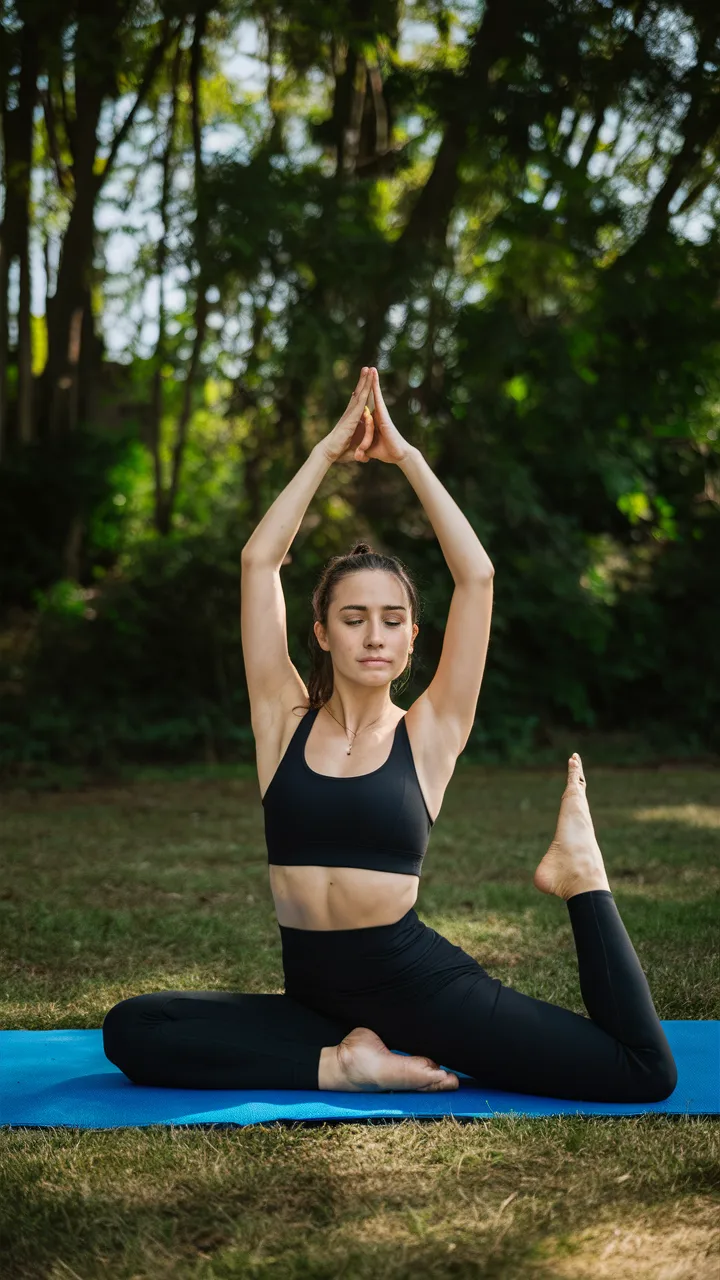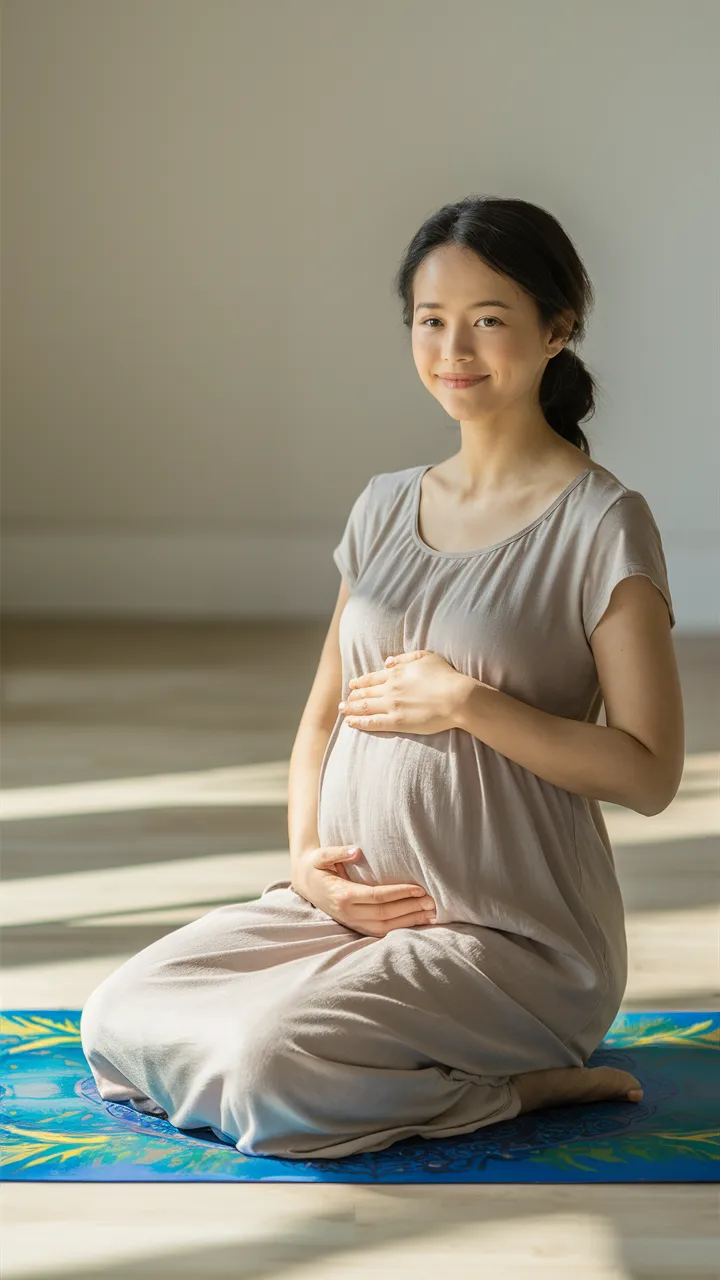Pregnancy is a beautiful and transformative journey, but it comes with its own set of challenges and precautions, especially when it comes to physical activities like yoga. While prenatal yoga offers numerous benefits such as improved flexibility, reduced stress, and better overall well-being, it’s crucial to be aware of Yoga Poses
To Avoid During Pregnancy. Understanding which poses are safe and which ones should be avoided can make a significant difference in maintaining a healthy pregnancy. In this guide, we will explore the essential Yoga Poses To Avoid During Pregnancy to ensure that your yoga practice supports both your and your baby’s health and safety.
How pregnancy changes the body and affects yoga practice:
It is crucial to modify your workout regimens, including yoga, to account for the significant physical and emotional changes that occur during pregnancy. Pregnancy is a great time to practice yoga since it can help with flexibility, stress relief, and general well-being.
To make sure that your practice stays safe and advantageous for you and your unborn child, it is imperative that you are aware of the Yoga Poses To Avoid During Pregnancy.
Hormonal changes cause your body to adjust to accommodate your growing baby, which includes a shift in your center of gravity and increased flexibility in your joints. If you are not careful, this extra flexibility can put you in greater danger of overstretching and injury.

Additionally, poses that put pressure on the abdomen or require significant balance can be particularly risky. Deep backbends, intense twists, and poses involving lying on the belly are among the Yoga Poses To Avoid During Pregnancy, as they can strain your body and compress the uterus.
Yoga poses to avoid during pregnancy Considering these adjustments will help you tailor your practice to emphasize comfortable, supportive poses that improve your overall health and well-being.
To customize your yoga practice to meet your unique needs and ensure a safe and healthy practice during your pregnancy, always seek advice from a healthcare professional or a qualified pregnant yoga instructor.
Guidelines for Prenatal Yoga:
Practicing yoga during pregnancy can be immensely beneficial, but it’s essential to follow general guidelines to ensure safety. Understanding the Yoga Poses To Avoid During Pregnancy is crucial to prevent any harm to you or your baby.
First and foremost, before starting or continuing with yoga while pregnant, always get advice from your healthcare professional. Look for prenatal yoga sessions or instructors; they are qualified to offer safe modifications. Among the yoga poses to avoid during pregnancy include deep backbends, powerful twists, poses that require resting on the belly, and poses that require strong abdominal movements.

Give special attention to mild strengthening, stretching, and relaxation methods. Pay attention to your body, refrain from overexerting yourself, and utilize supportive tools like bolsters and blocks. During your practice, stay hydrated, don’t overheat, and breathe steadily and comfortably.
These tips can help you have a safe and healthy yoga practice that benefits your developing baby as well as your own health. You can also learn which poses to avoid during pregnancy.
Yoga poses to avoid during Pregnancy:
For the safety and well-being of both you and your unborn child, it is imperative that you know which yoga poses to avoid during pregnancy. Some positions are inappropriate for pregnancy practice because they can overstress your body or cause tightness to the uterus.

Some yoga poses that are specifically advised against during pregnancy are deep backbends like Wheel Pose and Camel Pose. These poses have the potential to cause discomfort or injury because they overstretch the abdominal muscles and strain the lower back.
Deep twists, such as the Twisted Chair or Revolved Triangle Pose, should also be avoided since they can compress the abdomen and impede blood flow to the uterus. Cobra pose and bow pose are two examples of poses that should be avoided since they entail reclining on the belly and may cause discomfort or even injury to the growing fetus.
Similar to headstands and handstands, inversions like these should be avoided since they put more strain on the stomach area and increase the danger of falling.
You can guarantee a safer and more comfortable practice that promotes both your health and the health of your unborn child by being aware of and avoiding these certain yoga poses throughout your pregnancy.
Always consult with your healthcare provider or a certified prenatal yoga instructor for personalized guidance.
Why these yoga poses to avoid during Pregnancy:
It’s important for pregnant moms to understand why certain yoga poses should be avoided during pregnancy in order to put their health and the health of their unborn child first. These positions carry possible dangers that could have a negative impact on the developing fetus as well as the mother.
Deep backbends that put too much weight on the lower back and abdomen, such as Wheel or Full Camel Pose, can cause pain and strain. Similar to this, deep twists such as the Seated Spinal Twist and Revolved Triangle Pose can compress the abdominal region, which may limit blood flow to the uterus and impact the oxygen supply to the fetus.
Potential risks associated with each pose:
Poses involving lying on the belly, such as Cobra Pose or Bow Pose, can cause discomfort and may compress the uterus, which is not advisable during pregnancy. Additionally, inversions like Headstands or Handstands pose a risk of falling and increase pressure on the abdominal region, potentially compromising the safety of both mother and baby.

By understanding the rationale behind avoiding these poses, expectant mothers can make informed decisions to prioritize a safe and supportive yoga practice throughout their pregnancy journey.
Safe Alternatives and Modifications:
While certain yoga poses should be avoided during pregnancy, there are plenty of safe alternatives and modifications that expectant mothers can incorporate into their practice to maintain fitness and relaxation.
For example, pregnant people can choose easy backbends like Modified Bridge Pose or Cat-Cow Stretch instead of deep ones like Wheel Pose or Full Camel Pose. These positions provide comparable advantages without putting undue strain on the lower back or abdomen.
Similarly, pregnant people can practice open twists like Half Lord of the Fishes Pose or Gentle Seated Twist instead of deep twists like Revolved Triangle Pose or Seated Spinal Twist. These adjustments aid in maintaining flexibility and offer a kinder stretch without squeezing the abdominal region.
Furthermore, supported postures using a bolster under the belly, like Tabletop Pose or Supported Fish Pose, can be substituted for positions that require reclining on the belly.
These modifications offer comfort and support while still providing the desired stretch and relaxation. By incorporating safe alternatives and modifications, expectant mothers can continue to enjoy the benefits of yoga while ensuring a safe and comfortable practice throughout their pregnancy.
Professional advice on safe prenatal yoga practice:
Seeking professional advice on safe prenatal yoga practice is paramount for expectant mothers to navigate their yoga journey safely and effectively, especially concerning Yoga Poses To Avoid During Pregnancy.
Obstetricians, midwives, and pregnant yoga teachers are among the healthcare professionals who can provide priceless advice that is customized for each patient. Depending on your medical history, the stage of your pregnancy, and any current issues, they can offer professional advice on which poses to avoid.
Expert recommendations for safe prenatal yoga practice usually include tailored adjustments to meet the special requirements and constraints of pregnancy. To reduce dangers to the mother and developing baby, this may involve avoiding deep backbends, strong twists, poses involving reclining on the belly, or inversions.
Prenatal yoga instructors are also educated to provide safe substitutions and adjustments that accommodate the body’s shifting changes throughout pregnancy. They can train expecting mothers in appropriate alignment, breathing exercises, and relaxation techniques.
By seeking professional advice on safe prenatal yoga practice, expectant mothers can make informed decisions about their yoga practice, ensuring a safe and beneficial experience for both themselves and their baby throughout pregnancy.
Conclusion:
In conclusion, understanding the importance of Yoga Poses To Avoid During Pregnancy is essential for expectant mothers to ensure a safe and beneficial yoga practice. By seeking professional advice and following guidelines for prenatal yoga, individuals can make informed decisions to prioritize their well-being and the health of their baby.
With careful attention to modifications and alternatives, expectant mothers can continue to enjoy the many benefits of yoga while navigating the beautiful journey of pregnancy with confidence and peace of mind. Click to learn more.
FAQs:
Which yoga poses should I avoid during pregnancy?
Deep backbends, intense twists, poses involving lying on the belly, and inversions should be avoided during pregnancy to minimize potential risks.
Why should I avoid certain yoga poses during pregnancy?
These poses can strain the abdomen, compress the uterus, or increase the risk of falls, potentially harming both the mother and the developing baby.
Can I still practice yoga during pregnancy?
Yes, you can practice yoga during pregnancy, but it’s important to choose prenatal yoga classes or modify your practice with guidance from a healthcare provider or certified instructor.
What are safe alternatives to avoid poses during pregnancy?
Gentle backbends, open twists, and supported poses are safe alternatives that offer similar benefits without the risk of injury or discomfort.
How can I find a qualified prenatal yoga instructor?
Look for instructors who are certified in prenatal yoga and have experience working with pregnant individuals. Your healthcare provider may also be able to provide recommendations.
